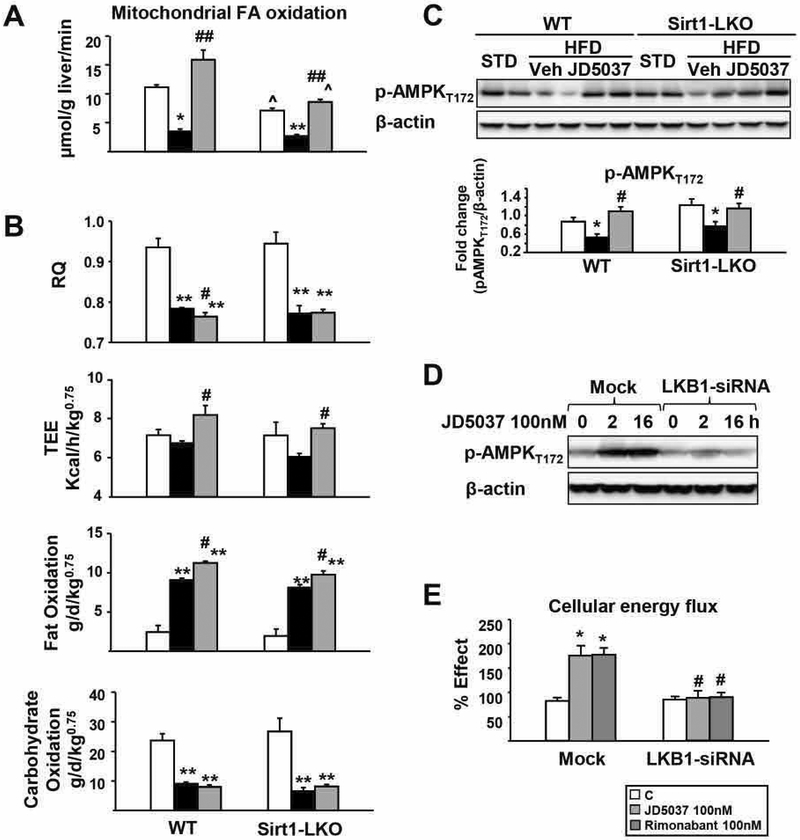FIG. 5.
Reversal of HFD-induced decrease in hepatic fatty acid oxidation and AMPK phosphorylation by CB1R blockade is independent of hepatic Sirt1.
(A) Rate of fatty acid β-oxidation in mitochondria from freshly prepared liver homogenates incubated with [14C]oleic acid, as measured by the radioactivity recovered as CO2 plus acid-soluble products (B) in vivo respiratory quotient (RQ), total energy expenditure and fatty acid and carbohydrate oxidation rates determined by indirect calorimetry over a 24 h period; (C) effects of HFD and JD5037 treatment on hepatic AMPK phosphorylation in WT and Sirt1-LKO mice. n= 4 mice/group. Repeated at least three times. Densitometry as above. *p<0.05 and **p<0.001 compared to STD controls. #p<0.05, ##p<0.001 compared to HFD vehicle group. ^p<0.05 compared to the value from the same treatment group in WT mice. Inverse CB1R antagonist activated AMPK (D) and increased fatty acid oxidation rate (E) through LKB1 in mock-transfected control but not in LKB1-siRNA-transfected HepG2 cells. Fatty acid oxidation complete assay was performed using a fluorescence kit from Abcam.

